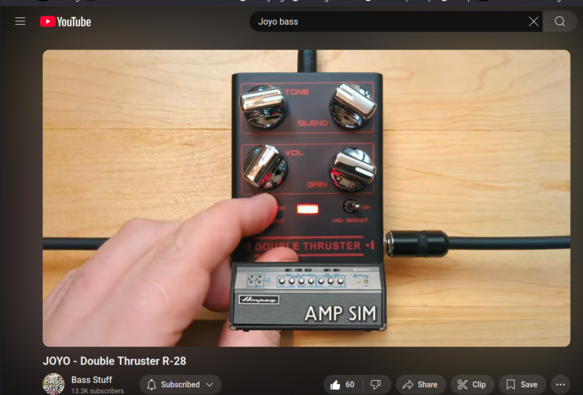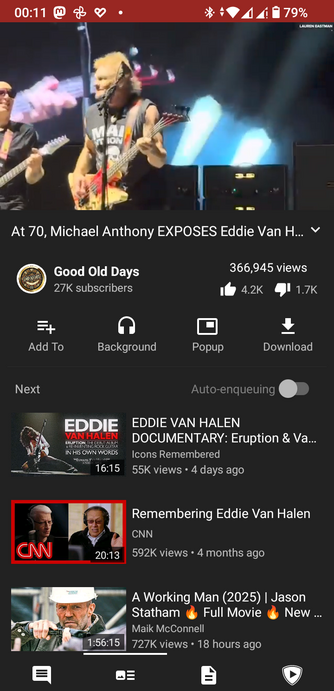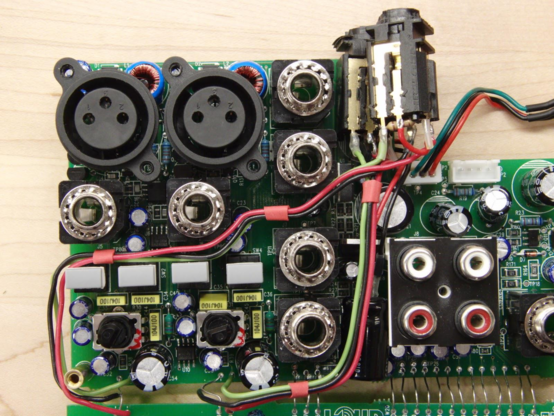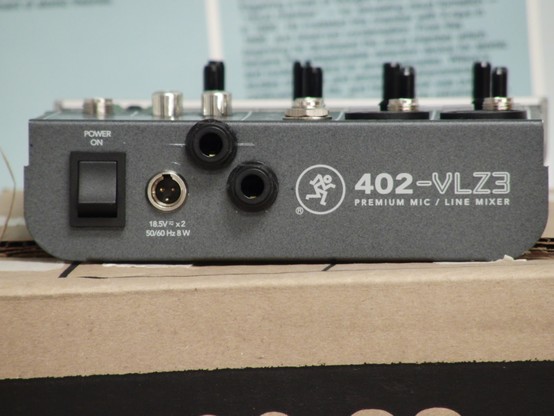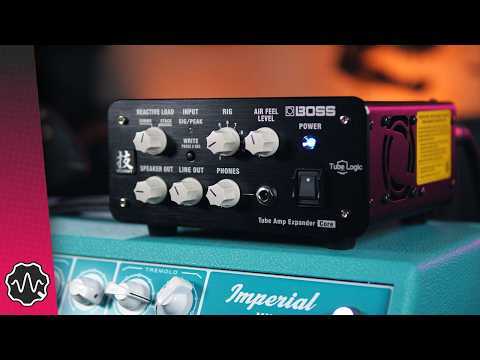Recent searches
Search options
#soundengineering
Van Halen Bass man Anthony Precision Bass History 70 years Michaël Anthony
Band Snake Metal San Gabriel Valley Mammoth with Van Halen
Mammoth Bassist had lost Bass man. So Anthony Bass man from Snake was asked to come in since he played fantastic with them. For Anthony it was launching pad into good music, giving great high pitched backing vocals
#Music #Audio #Bass #Guitar #SoundEngineering #Joyo #Pedal #VanHalen #Fender #Mustang #Michaël #Anthony #Snake
Awesome pedal also good for Bass just put Bass pedal with tone correction after it.
A great addition in your signal chain.
When looking for a small mixer, if someone puts the 402-VLZ4 aside because it lacks inserts, I modded my 402-VLZ3 some years ago, adding two 1/4 TSRR inserts, one for each mic input (TSRR stands for Tip-Send Ring-Receive ).
Details here: https://insertsfor402.blogspot.com/2011/02/1-introduction.html The VLZ4 internals should be similar, but didn't check...
Update: Thanks to @furicle for this suggestion. I think it's about perfect:
tmp $ AV_LOG_FORCE_NOCOLOR=true ffmpeg -hide_banner -i example.opus -filter:a volumedetect -f null /dev/null
Input #0, ogg, from 'example.opus':
Duration: 02:13:19.89, start: 0.007500, bitrate: 118 kb/s
Stream #0:0(eng): Audio: opus, 48000 Hz, stereo, fltp
Metadata:
encoder : Lavf58.45.100
[Parsed_volumedetect_0 @ 0x563ea07eeb00] n_samples: 0
Stream mapping:
Stream #0:0 -> #0:0 (opus (native) -> pcm_s16le (native))
Press [q] to stop, [?] for help
Output #0, null, to '/dev/null':
Metadata:
encoder : Lavf61.7.100
Stream #0:0(eng): Audio: pcm_s16le, 48000 Hz, stereo, s16, 1536 kb/s
Metadata:
encoder : Lavc61.19.101 pcm_s16le
[Parsed_volumedetect_0 @ 0x7f9920003c00] n_samples: 767987856
[Parsed_volumedetect_0 @ 0x7f9920003c00] mean_volume: -21.0 dB
[Parsed_volumedetect_0 @ 0x7f9920003c00] max_volume: -2.8 dB
[Parsed_volumedetect_0 @ 0x7f9920003c00] histogram_2db: 1
[Parsed_volumedetect_0 @ 0x7f9920003c00] histogram_3db: 70
[Parsed_volumedetect_0 @ 0x7f9920003c00] histogram_4db: 3872
[Parsed_volumedetect_0 @ 0x7f9920003c00] histogram_5db: 98331
[Parsed_volumedetect_0 @ 0x7f9920003c00] histogram_6db: 750534
[out#0/null @ 0x563ea084bf80] video:0KiB audio:1499976KiB subtitle:0KiB other streams:0KiB global headers:0KiB muxing overhead: unknown
size=N/A time=02:13:19.87 bitrate=N/A speed= 573x
Dear sound/audio folks and engineers,
[Update: just for clarity: I'm looking for a command line utility that will help me decide which of 70 audio recordings need amplification/compression/normalization. Something that can print out media stats like average loudness, or something like that]
I have a directory with 3.5GiB of audio files (chiefly opus & m4a) which are spoken word recordings.
Some of them are quite low, and some of them are quite dynamic such that it's a whisper at times and nearly a shout at other times.
I've processed a lot of them with #audacity's compressor filter or #ffmpeg (ffmpeg -i audio.m4a -filter:a "speechnorm=e=50:r=0.0001:l=1" audio-normalized.m4a), but there are some unprocessed files in the collection, which are a pain to individually find and fix.
Is there a way from the #CommandLine to detect the loudness and/or dynamic range of audio files so that I can automatically flag them for processing with ffmpeg?
Thanks!!
Good lessons on bass fundamentals from Scotts Bass Lessons great player
7 Bass Lines to take YOU from ZERO to HERO (Beginner friendly)
Maxi und Denis waren heute fleißig und haben unseren neuen ART S8 Splitter von Applied Research & Technology in unser Rack eingebaut. (Unbezahlte Werbung)
I am making a very nice recording, this time in the K Desktop Environment, on one of my master tapes.
I'm recording Herbie Hancock I'll make another post separately about that. The manner in which the Bass player is handling the double bass is amazing!
This is a very well explained video about a complex yet interesting device to use on your guitar or base amplifier which enables you to drop the need to connect a speaker cabinet.
3D printing a custom Velcro-secured case for a wearable speaker prototype! Designed in #FreeCAD and printed on a #Creality printer. #3DPrinting #Prototyping #WearableTech #IndustrialDesign #OpenSource #HardwareDesign #Makers #CreativeTech #TechInnovation #DIY #ProductDesign #SoundEngineering #RapidPrototyping
Something interesting occurred when I updated this toot. As the composition was being uploaded I did not pay attention and pressed send. The server got confused didn't send the updated version because the image was not there yet and kept the old one. My Local Client noticed the problem and kept the updated version for itself
Bass Guitar Amplifier Adjustment
Adjusting a bass guitar amplifier involves setting the EQ (equalization) and other controls to get the best tone for your style, venue, and preferences. Here’s a step-by-step guide to dialing in your bass amp settings:
1. Set Initial Controls
Gain: Start with the gain at a low level. Increase it gradually until you hear distortion, then back off until the sound is clean. If you prefer a grittier tone, leave the gain slightly higher.
Volume: Set the volume to a comfortable level. Adjust it based on your playing environment, such as practicing alone or playing with a band.
2. Adjust EQ (Bass, Mid, Treble)
Bass: Controls the low-end frequencies. Increasing the bass can add warmth and depth. For a more defined sound, avoid cranking the bass too high, as it can make the sound muddy.
Mids: Mids are essential for a clear and punchy tone, especially in a mix. Higher mids add clarity and presence; reducing them can create a scooped sound often used in slap bass.
Treble: Controls the high-end frequencies. Increase it for more clarity and definition, or roll it back for a warmer sound.
3. Use Shape/Contour Controls (if available)
Many bass amps have a "shape" or "contour" control that adjusts the mids for different tones. Experiment to see how these affect your sound, especially if you want a quick, scooped tone.
4. Experiment with Extra Features
Compression: Some amps have a built-in compressor, which smooths out your dynamics and adds sustain. Start low, increasing only until it’s just noticeable.
Drive or Overdrive: If you like a more aggressive, gritty tone, use the drive/overdrive knob to add subtle distortion.
5. Room Acoustics
Adjusting your EQ based on the room’s acoustics is important, especially for live gigs. Rooms with a lot of bass resonance may require turning down the low-end or cutting certain frequencies.
6. Test and Fine-Tune
Play different styles and techniques, like slap, fingerstyle, and pick, to see how your tone holds up.
I am going to link a long article here which I need to post on another Fediverse account
This post does not come from my brains; I've copied it over after I've seen that everything checks out as factual.
The post is from another Network
https://mastodon.bsd.cafe/@Dendrobatus_Azureus/114212828371237364
Joyo Bantam micro tubeAmp series are amazing micro amps.
These microamps have one hybrid circuit, which consists of a gorgeous tube in the front section and transistors in the back
I've run an early Bass session today. The setup of my effects are in the photographs
I can dwell on them, if you would want some extra information; the hashtags tell you which brands of pedals I use even though they are clearly visible in the photographs
What does your Amp modeler sound like, in comparison with the real tube amps and cabinets that you have at your musical space?
So you have a neat digital controller? That's nice.
Now playing Miles Davis - Water Babies 1968
LP 96kHz Analog version
I'm paying attention to the incredible double Bass!!!


